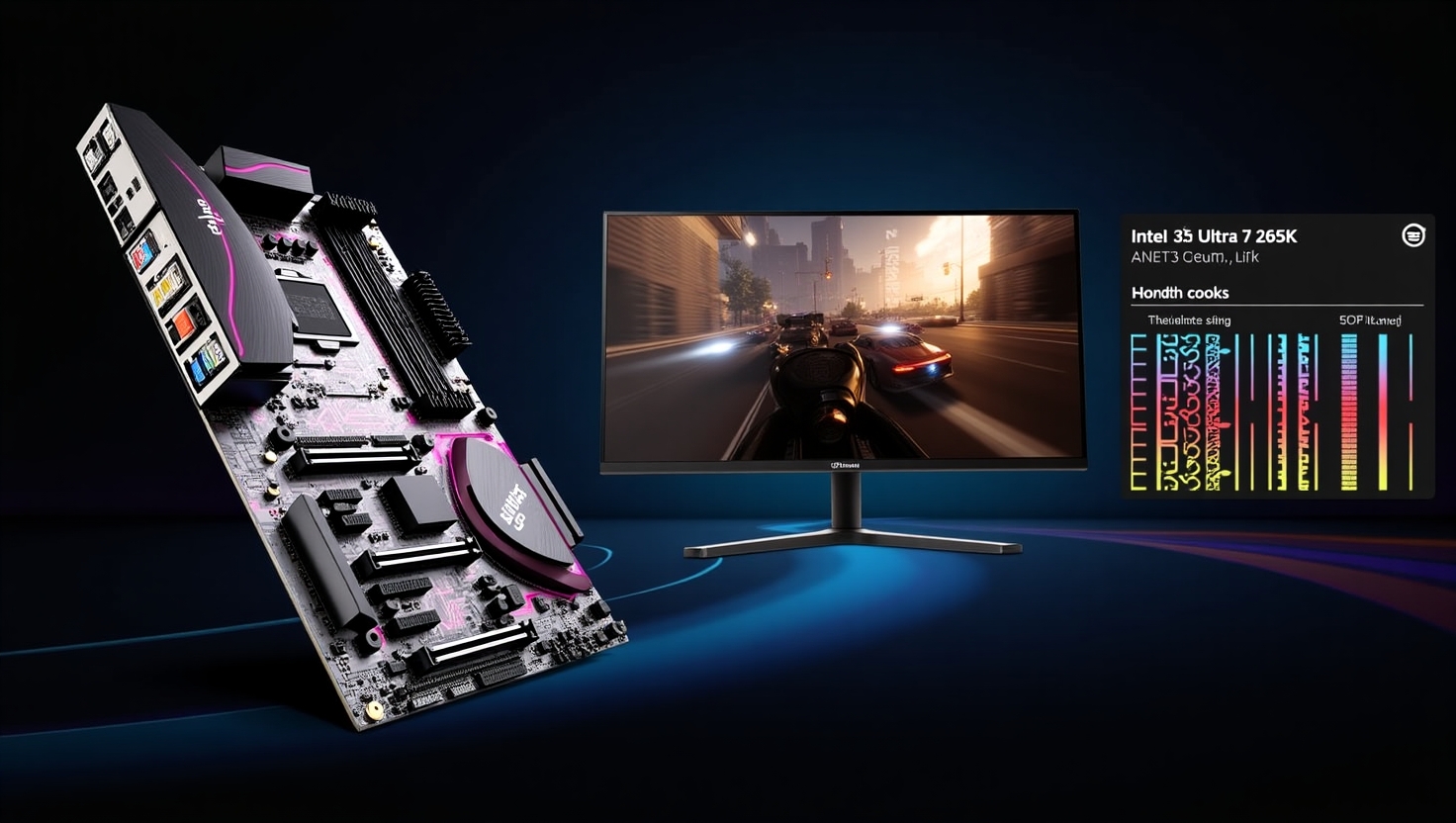Intel Core Ultra 7 265K: A Comprehensive Performance Review for Gamers
Introduction to Intel Core Ultra 7 265K
The Intel Core Ultra 7 265K has made a significant splash in the CPU market, carving a niche within the gaming sector. Dubbed as a robust option for gamers, it comes packed with features designed to elevate gaming experiences and productivity tasks. Initially met with skepticism, recent updates have transformed it from what some called ‘a lemon’ into a formidable contender. With an architecture tailored for high-performance computing, this CPU offers a compelling blend of clock speed, core density, and energy efficiency—making it an attractive choice in today’s competitive landscape.
Key Features of the Intel Core Ultra 7 265K
The Intel Core Ultra 7 265K showcases significant architectural enhancements. These improvements are akin to upgrading a sports car engine for not just speed, but optimal performance across all terrains. Its multi-core setup includes high clock speeds that impressively handle demanding applications and gaming environments. With a notable thermal design power (TDP) that maintains energy efficiency, it balances power consumption with performance output—a feat not always easily achieved in high-caliber CPUs.
The Ultra 7 265K doesn’t just promise low latency and high-speed operations; it also stands out with its enhanced parallel processing capabilities. These features collectively place it in a respectable position relative to its contemporaries, such as the AMD Ryzen 7 9800X3D.
The Rise of Gaming Performance
One of the Ultra 7 265K’s key highlights is its improved gaming performance. After recent updates, its capability to run graphically intense games like Total War: Warhammer III at an average of 220fps speaks volumes. Gamers often equate frame rates to the smoothness of gameplay, and this CPU delivers an experience akin to upgrading from standard televisions to high frame rate displays—a noticeable and appreciated difference. Such enhancements affirm Intel’s commitment to refining their CPUs post-launch and addressing user feedback to ensure higher satisfaction rates.
Performance Review: Benchmarks and Competitors
In terms of benchmarking, the Intel Core Ultra 7 265K has shown dramatic improvements. Previous models struggled in certain tests, lagging behind both its predecessors and competitors. However, thanks to optimized architecture and software updates, the Ultra 7 265K has outperformed expectations. For instance, in multi-threaded benchmarks like Cinebench, it has surged from a score of 117 to 136, putting it ahead of even the Core i9 14900K in some tests.
Comparisons with AMD’s offerings such as the Ryzen 7 9800X3D show this CPU excels in scenarios demanding high multitasking and robust thermal management, although it occasionally falls behind in ultra-high-end gaming where AMD’s chips tend to dominate. Still, in environments requiring finesse and efficiency, the Ultra 7 265K rises to the occasion.
Updates That Changed the Game
The transformative leap made by the Intel Core Ultra 7 265K is largely attributed to targeted updates that addressed initial performance bottlenecks. These updates have not only improved thermal management but also enhanced workload handling, catapulting it from a lackluster performer to a standout in its class. The shift in community perception and reception following these updates has been notable, with many reassessing the CPU’s place in the gaming ecosystem.
Conclusion: Is the Intel Core Ultra 7 265K Worth It?
In summation, the Intel Core Ultra 7 265K is a CPU that embodies the power of evolution and iterative refinement. Its architecture, clock speed improvements, and efficient power use provide compelling reasons for gamers and productivity users alike to consider it. While it may not claim the crown in every benchmarking scenario, its ability to adapt and improve makes it a worthy contender in a crowded marketplace. For users seeking a balance of power and efficiency, the Ultra 7 265K stands as a credible option.
Aspiring buyers might weigh its strengths—like significant post-update enhancements and impressive gaming performance—against potential weaknesses when juxtaposed with emerging CPUs in similar price brackets. With ongoing developments in processor technology, the future holds promising enhancements that could further tip the scales in Intel’s favor.
For further insights into this CPU’s journey from ‘lemon’ to leader, explore related discussions on PCGamesN.
This blog post was crafted to bring clarity and guidance to your tech-enhanced lifestyle and help you make informed purchase decisions. Stay tuned for more updates and reviews.

